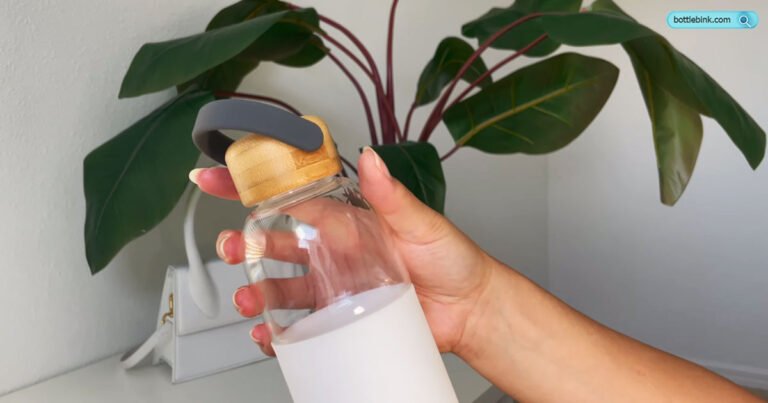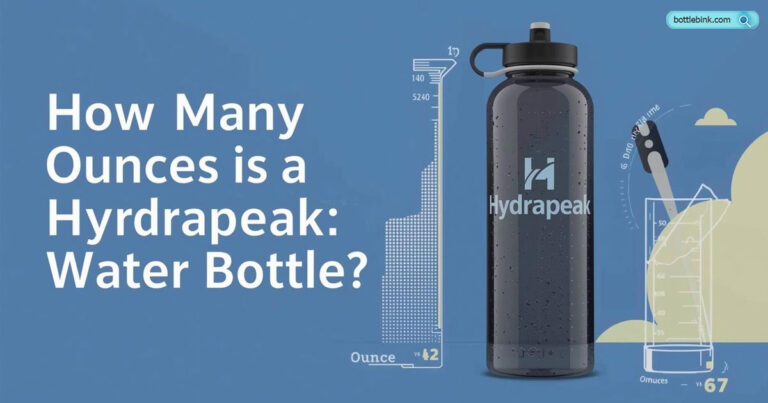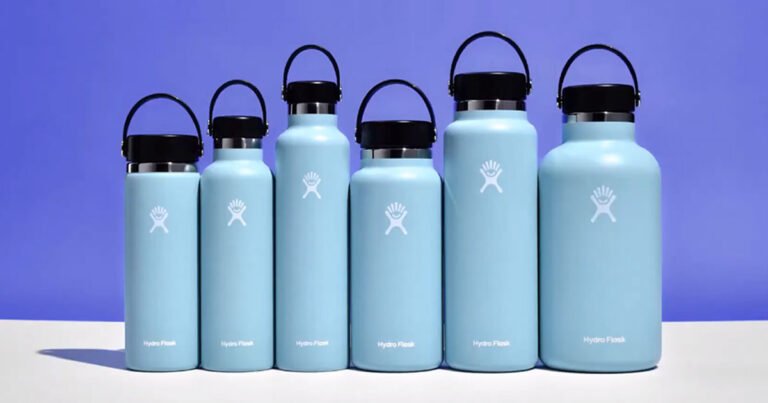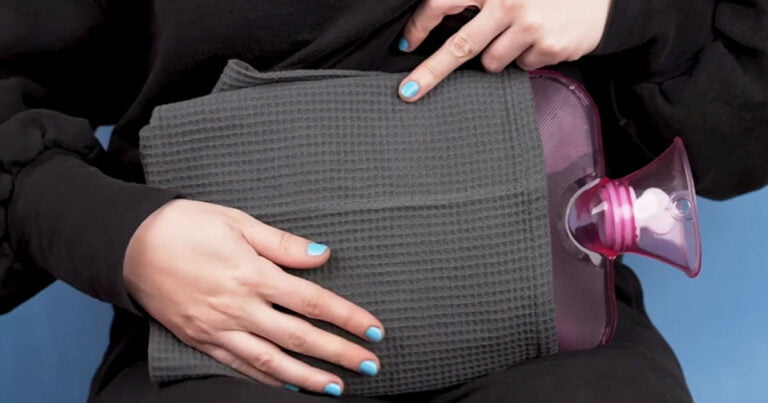How Many Bottles of Water is 3 Liters: Easy Hydration Math!
Three liters of water is equivalent to six standard 16.9 oz water bottles. Staying hydrated is essential for overall health, and consuming three liters of water daily can help maintain proper bodily functions.
Proper hydration supports digestion, circulation, and brain function while also promoting healthy skin and weight management. By understanding how many bottles of water make up three liters, individuals can easily track their daily water intake to ensure they meet the recommended amount for optimal health and well-being.
Developing a habit of drinking enough water throughout the day can lead to increased energy levels, improved focus, and better overall health outcomes. Start prioritizing hydration today to reap the many benefits it offers.
Understanding Water Measurement
Wondering how many bottles you need for 3 liters of water? A standard 16. 9 oz bottle holds approximately 0. 5 liters, so 3 liters equals about 6 bottles. It’s important to understand water measurements for daily hydration.
The Different Units Of Measurement For Water
When it comes to understanding water measurement, it’s important to be familiar with the different units of measurement used. Water can be measured in various ways, such as liters, gallons, ounces, and milliliters. These units are often used interchangeably but knowing how they relate to each other can help you get a better grasp of water measurement.
Liters: The Standard Unit Of Measurement
The liter is the most commonly used unit of measurement for water around the world. It is a metric unit and is equivalent to 1,000 milliliters. One liter of water weighs approximately one kilogram. Understanding the liter measurement is essential in various contexts, such as cooking, scientific experiments, or daily hydration needs.
Gallons: Commonly Used In The United States
In the United States, gallons are the standard unit of measurement for water. One gallon is equal to approximately 3.785 liters. This unit is often used in household settings for measuring water consumption, as well as in the agriculture and manufacturing industries. If you’re in the U.S., understanding how gallons relate to liters can be helpful when evaluating your water usage.
Ounces: Commonly Used For Bottled Water
When it comes to bottled water, you’ll often find the measurement listed in ounces. It is especially prevalent in the beverage industry, where water is commonly sold in 8-ounce, 16-ounce, or 24-ounce bottles. To convert ounces to liters, keep in mind that one ounce is equivalent to approximately 29.57 milliliters or 0.02957 liters. Understanding this conversion can help you determine how many bottles of water you’ll need to reach your desired amount.
Milliliters: Smaller Measurements For Precision
Milliliters are commonly used for more precise measurements of water. One milliliter is equal to 0.001 liters. This unit is used in scientific research, medical applications, and some specific industries. Knowing how milliliters relate to liters can be useful when following precise recipes or measuring small quantities of water.
In conclusion, understanding the different units of measurement for water, such as liters, gallons, ounces, and milliliters, is crucial for various purposes. Whether you’re cooking, tracking your water intake, or engaging in scientific experiments, being familiar with these units allows for effective communication and accurate measurement.
Converting Liters To Bottles
Converting Liters to Bottles: Wondering how many bottles are in 3 liters of water? Let’s break it down step by step.
Determining The Volume Of A Bottle
First, we need to know the volume of a single water bottle.
Calculating The Number Of Bottles In 3 Liters
Now, let’s determine how many bottles make up 3 liters of water.
Factors To Consider
Factors to Consider:
Variations In Bottle Sizes
Standard water bottles contain 500 ml, which equals 0.5 liters
Additional Factors Affecting Measurement
- Bottle Shape: Irregular shapes can affect accuracy
- Filling Level: Inconsistent filling affects volume
- Temperature: Warmer liquid expands, affecting measurement
- Bottle Material: Thick plastic can alter volume perception
Comparison With Other Fluids
When it comes to staying hydrated, understanding how many bottles of water make up a specific amount can be helpful. In this section, we will compare the number of bottles needed to reach 3 liters for various other fluids.
Calculating The Number Of Bottles For Different Fluids
If you prefer other beverages over water, it’s important to know how many bottles you’ll need to consume for the same quantity. Here’s a comparison of the number of bottles required to reach 3 liters for different fluids:
Water
Starting with the standard choice, water is the easiest fluid to monitor and drink for hydration purposes. As we know, 1 liter is approximately equal to 33.8 fluid ounces, which means that 3 liters of water is around 101.4 fluid ounces. Considering that a regular-sized water bottle typically holds 16.9 fluid ounces, you would need approximately 6 water bottles to fulfill your 3-liter intake.
Juice
If you prefer a refreshing glass of juice, the number of bottles required can vary depending on the type. Typically, juice bottles come in various sizes, such as 8, 12, or 16 fluid ounces. On average, 1 liter of juice is equal to 33.8 fluid ounces, just like water. Therefore, to reach 3 liters, you would need around 6 juice bottles containing 16 fluid ounces each. Keep in mind that bottle sizes may vary, so adjust accordingly.
Soda
Although soda is not the most recommended choice for hydration, it’s always good to be aware of how many bottles you’ll need if it’s your preferred beverage. Just like water and juice, 1 liter of soda is approximately equal to 33.8 fluid ounces. Considering that an average soda can contains 12 fluid ounces, you would need approximately 8 soda cans to reach 3 liters of soda.
Coffee Or Tea
If you rely on your daily caffeine fix, either through coffee or tea, the number of bottles needed to reach your desired amount can be different based on serving size. Assuming that a serving of coffee or tea is around 8 fluid ounces, you would need approximately 13.4 servings to reach 3 liters. Keep in mind that the caffeine content of these beverages may affect your hydration levels, so it’s important to factor in additional water intake.
In conclusion, understanding how many bottles of water make up 3 liters can be useful for comparing other fluids as well. Remember that the number of bottles may vary depending on the fluid you choose, so always check the serving sizes and adjust accordingly to meet your desired hydration goals.
Environmental Impact
3 liters of water is equivalent to approximately 12. 7 standard size water bottles, and their environmental impact can be significant. Opting for reusable bottles can help reduce waste and minimize the ecological footprint associated with single-use plastic bottles.
The Importance Of Reducing Single-use Bottles
Single-use plastic bottles can have a devastating impact on the environment. The production and disposal of these bottles contribute to pollution, harm wildlife, and deplete natural resources. As consumers, it’s crucial to be aware of the negative effects and take steps to reduce the use of single-use bottles.
Alternatives To Single-use Plastic Bottles
Switching to reusable water bottles is a simple yet effective way to reduce the environmental impact of bottled water. Additionally, investing in filtration systems at home can provide a sustainable and cost-effective way to access clean drinking water without relying on single-use plastic bottles.
Health Benefits Of Adequate Water Intake
Staying hydrated is crucial for maintaining overall health and well-being. Adequate water intake is essential for various bodily functions, including digestion, circulation, temperature regulation, and toxin removal. With the average adult body comprising about 60% water, there is no doubt that staying adequately hydrated is a key component of a healthy lifestyle. In this section, we will explore the health benefits of drinking enough water and the recommended daily intake for optimal health.
Why Drinking Enough Water Is Essential
Water is essential for life and is involved in numerous bodily functions such as regulating body temperature, transporting nutrients, and removing waste products. Insufficient water intake can lead to dehydration, which can cause fatigue, headaches, and decreased cognitive function. Drinking enough water also helps to maintain electrolyte balance and support healthy joint function.
Recommended Daily Water Intake
The recommended daily water intake varies depending on factors such as age, sex, activity level, and climate. Generally, it is recommended that adult men consume about 3.7 liters (125 ounces) of water per day, while adult women should aim for 2.7 liters (91 ounces) per day. This can be achieved through a combination of water, beverages, and water-rich foods.
Tips For Staying Hydrated
Staying hydrated is essential for overall health. To reach the recommended 3 liters of water per day, aim for 6 standard 16. 9 fl oz bottles. Incorporating fruits and vegetables high in water content can also contribute to your daily intake.
Practical Ways To Ensure Sufficient Water Consumption
To stay healthy and properly hydrated, it’s important to consume an adequate amount of water each day. Ensuring that you drink enough water can be a challenge for many people, but with some practical tips, you can make it easier to meet your daily hydration goals. Here are some simple strategies to help you stay on track:
1. Carry a water bottle with you wherever you go. Having a reusable water bottle on hand makes it convenient to drink water throughout the day, whether you’re at work, running errands, or exercising.
2. Set reminders on your phone or computer to drink water at regular intervals. These reminders can help you establish a routine and ensure that you don’t forget to hydrate.
3. Make water more appealing by infusing it with fresh fruits or herbs. Adding slices of lemon, cucumber, or mint to your water can provide a refreshing taste and make it more enjoyable to drink.
4. Eat water-rich foods. Many fruits and vegetables have high water content and can contribute to your overall hydration. Include foods like watermelon, cucumbers, oranges, and lettuce in your diet.
5. Track your water intake using a mobile app or a journal. This can help you monitor how much water you’re consuming each day and keep you accountable to your hydration goals.
6. Drink water before, during, and after physical activity.
Staying hydrated while exercising is crucial for performance and recovery. Take regular sips of water during your workout to stay adequately hydrated.
Signs Of Dehydration To Watch Out For
Dehydration occurs when your body loses more fluids than it takes in. It can have negative impacts on your overall health and well-being. Here are some signs that you may be dehydrated:
1. Increased thirst: Feeling constantly thirsty can be a sign that your body is in need of more fluids.
2. Dry mouth and lips: When you’re dehydrated, you may experience a dry mouth and cracked lips.
3. Dark or infrequent urine: Dehydration can cause your urine to become darker in color and less frequent.
4. Fatigue and dizziness: Lack of proper hydration can lead to feelings of fatigue and dizziness.
5. Headaches and migraines: Dehydration can trigger headaches and migraines.
6. Muscle cramps: Dehydration can cause muscle cramps and spasms, particularly during physical activity.
7. Dry and cool skin: A lack of hydration can result in dry and cool skin.
By recognizing these signs, you can take steps to replenish your body’s fluids and avoid the negative effects of dehydration. Remember to drink water throughout the day and pay attention to your body’s needs.

Credit: www.amazon.com

Credit: www.newscientist.com
FAQs For How Many Bottles Of Water Is 3 Liters
How Many Bottles Of Water Is 3 Liters?
In general, a standard bottle of water is usually 500 ml. So, 3 liters equals 6 standard 500 ml bottles of water. This allows for easy tracking of daily water consumption and ensures you meet the recommended intake.
Is It Necessary To Drink 3 Liters Of Water Daily?
While 3 liters of water is a commonly recommended daily intake, individual needs may vary. Factors such as climate, physical activity, and overall health contribute to the amount of water needed daily. It’s essential to monitor your body’s signals and adjust water intake accordingly.
What Are The Benefits Of Drinking 3 Liters Of Water?
Consuming 3 liters of water daily can lead to improved hydration, enhanced skin health, better digestion, and increased energy levels. Adequate water intake can also aid in weight management, detoxification, and maintaining overall well-being. It’s an important element of a healthy lifestyle.
Conclusion
To sum up, understanding the relationship between liters and bottles of water can be useful in daily life. By knowing that 1 liter is roughly equivalent to 2 standard water bottles, we can easily calculate that 3 liters would be around 6 bottles of water.
This information can come in handy when planning for hydration during outdoor activities, travel, or simply staying hydrated throughout the day. Keeping track of water intake is essential for maintaining good health and well-being. So, next time you need to measure your water consumption, keep in mind that 3 liters is approximately equivalent to 6 bottles of water.
Stay hydrated!






